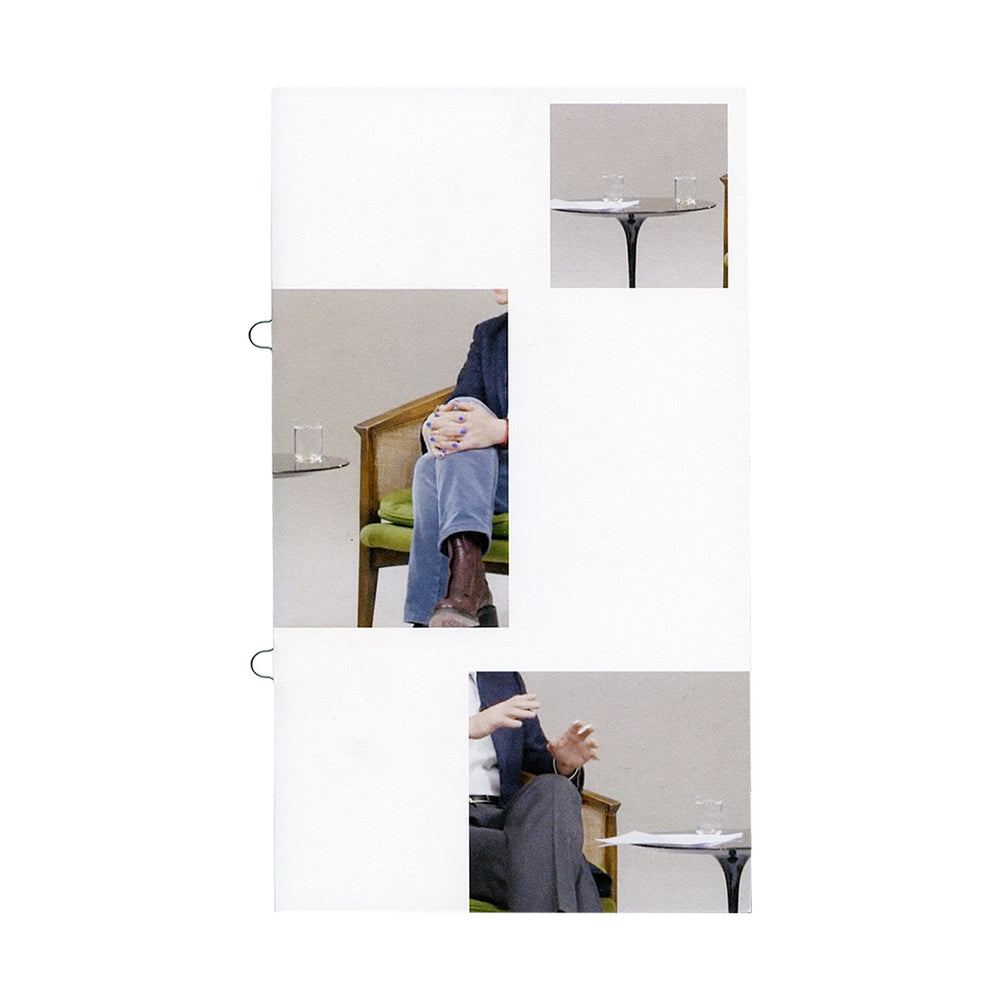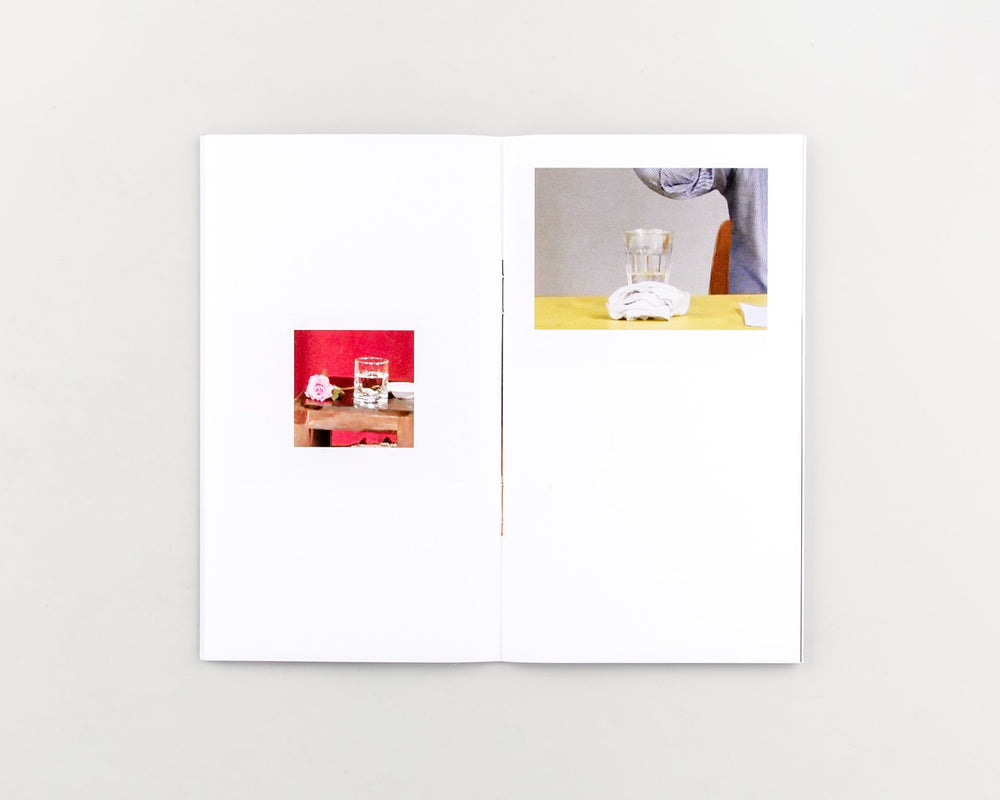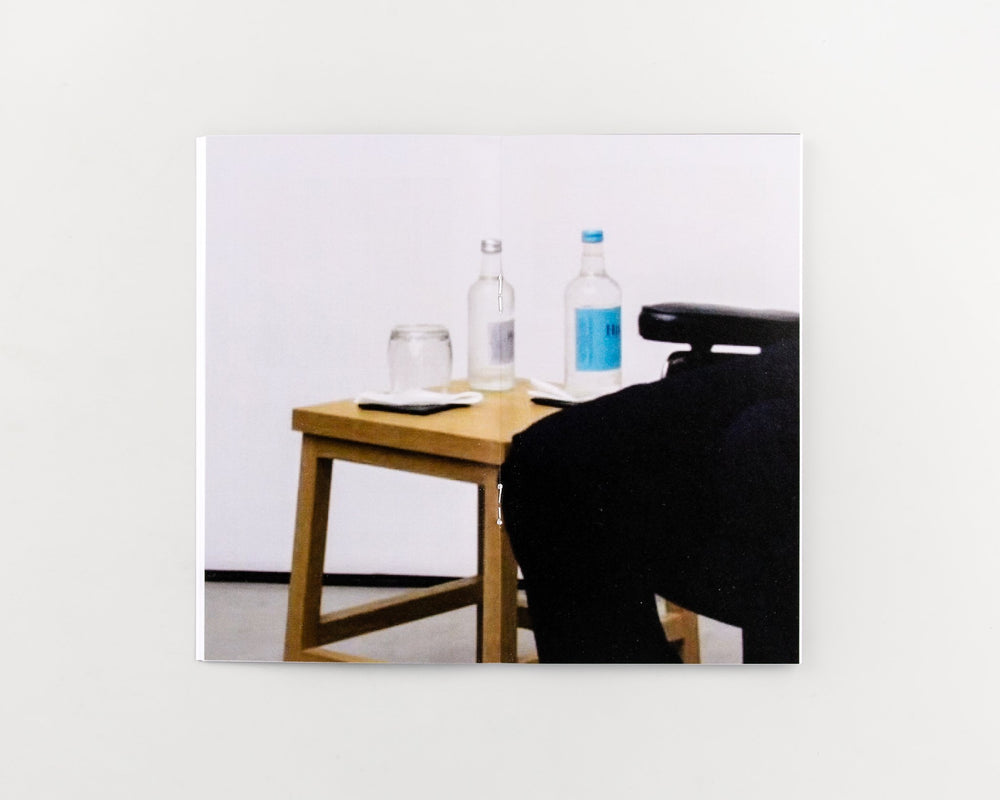Your cart is empty!
CP05.
Thea Luckcock
More Info"Water as a liquid we cannot live without. Often we disguise it in other things for pleasure, make it sweet, or hot.
In recordings from online lectures, interviews and panel discussions, where people talk at length with an intended audience, we perhaps see water in its simplest form.
The plainness of water in a glass can be its. As both clear materials combine to make something of almost unnoticeable substance. Here, water is transparent, both in its appearance, and as an action. Do we notice when someone takes a sip from a glass of water?
In a world of self-help talks taking a drink during a performance, could be a sign of weakness, a dependence on a material outside of our own resource, is it a prop, something to move, to turn our attention to, does it focus our thoughts, or go neglected?
To focus on objects has long been an exercise for artists, finding mediation in capturing the world of the visible in still life studies. In stillness we contemplate on our relationship as humans with the environment around us.
In these framed stills taken from videos of up to an hour in length, the water develops a story, a movement of its own as it is picked up, put down, and emptied, slowly."
"Water as a liquid we cannot live without. Often we disguise it in other things for pleasure, make it sweet, or hot.
In recordings from online lectures, interviews and panel discussions, where people talk at length with an intended audience, we perhaps see water in its simplest form.
The plainness of water in a glass can be its. As both clear materials combine to make something of almost unnoticeable substance. Here, water is transparent, both in its appearance, and as an action. Do we notice when someone takes a sip from a glass of water?
In a world of self-help talks taking a drink during a performance, could be a sign of weakness, a dependence on a material outside of our own resource, is it a prop, something to move, to turn our attention to, does it focus our thoughts, or go neglected?
To focus on objects has long been an exercise for artists, finding mediation in capturing the world of the visible in still life studies. In stillness we contemplate on our relationship as humans with the environment around us.
In these framed stills taken from videos of up to an hour in length, the water develops a story, a movement of its own as it is picked up, put down, and emptied, slowly."



